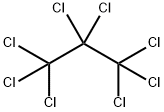1,1,1,2-TETRACHLOROETHANE
- CAS NO.:630-20-6
- Empirical Formula: C2H2Cl4
- Molecular Weight: 167.85
- MDL number: MFCD00000807
- EINECS: 211-135-1
- SAFETY DATA SHEET (SDS)
- Update Date: 2024-12-18 14:08:57

What is 1,1,1,2-TETRACHLOROETHANE?
Chemical properties
colourless liquid
Chemical properties
1,1,1,2-Tetrachloroethane is a colorless to yellowish-red liquid.
The Uses of 1,1,1,2-TETRACHLOROETHANE
1,?1,?1,?2-?Tetrachloroethane is a chlorinated hydrocarbon and used as a solvent for cellulose, acetate, fat, waxes, greases, rubber, and sulfur. It is a contaminant in groundwater. 1,?1,?1,?2-?Tetrachloroethane can also induce heptotoxicity.Environmental contaminants; food contaminants.
Definition
ChEBI: 1,1,1,2-tetrachloroethane is a member of chloroethanes.
General Description
Clear colorless liquid.
Air & Water Reactions
Insoluble in water.
Reactivity Profile
1,1,1,2-TETRACHLOROETHANE is incompatible with strong oxidizing agents and strong bases. 1,1,1,2-TETRACHLOROETHANE is also incompatible with dinitrogen tetraoxide, 2,4-dinitrophenyl disulfide, potassium, potassium hydroxide, nitrogen tetraoxide, sodium and sodium potassium alloy. 1,1,1,2-TETRACHLOROETHANE may react with chemically active metals, strong caustics, hot iron, aluminum and zinc in presence of steam. 1,1,1,2-TETRACHLOROETHANE may also react with mixtures of dinitrogen tetraoxide with halocarbons.
Fire Hazard
Literature sources indicate that 1,1,1,2-TETRACHLOROETHANE is nonflammable.
Safety Profile
A skin and severe eye irritant. Questionable carcinogen with experimental carcinogenic data. Incompatible with dinitrogen tetraoxide, 2,4-dinitrophenyl disulfide, potassium, potassium hydroxide, nitrogen tetroxide, sohum, sodium potassium alloy. Mutation data reported. When heated to decomposition it emits very toxic fumes of Cl-.
Potential Exposure
1,1,1,2-Tetrachloroethane is used as a solvent and in manufacture of insecticides, herbicides, soilfumigants; blanches, paints, and a number of widely used products; as are the other chloroethanes.
Shipping
UN1702 Tetrachloroethane, Hazard Class: 6.1; Labels: 6.1-Poisonous materials.
Incompatibilities
1,1,1,2-Tetrachloroethane is incompatible with strong oxidizing agents and strong bases. It is also incompatible with dinitrogen tetraoxide, 2,4-dinitrophenyl disulfide, potassium, potassium hydroxide, nitrogen tetraoxide, sodium and sodium potassium alloy. It may react with chemically active metals, strong caustics, hot iron, aluminum and zinc in presence of steam. It may also react with mixtures of dinitrogen tetraoxide with halocarbons.
Waste Disposal
Consult with environmental regulatory agencies for guidance on acceptable disposal practices. Generators of waste containing this contaminant (≥100 kg/mo) must conform with EPA regulations governing storage, transportation, treatment, and waste disposal.
Properties of 1,1,1,2-TETRACHLOROETHANE
| Melting point: | -70.21°C |
| Boiling point: | 138 °C (lit.) |
| Density | 1.598 g/mL at 25 °C (lit.) |
| vapor pressure | 12.0 mmHg |
| refractive index | n |
| Flash point: | 9℃ |
| storage temp. | Refrigerator |
| solubility | Chloroform (Slightly), Methanol (Slightly) |
| form | Oil |
| color | Colourless |
| Water Solubility | 2.89g/L(25 ºC) |
| BRN | 1733216 |
| Stability: | Stable. |
| CAS DataBase Reference | 630-20-6(CAS DataBase Reference) |
| IARC | 2B (Vol. 41, Sup 7, 71, 106) 2014 |
| EPA Substance Registry System | 1,1,1,2-Tetrachloroethane (630-20-6) |
Safety information for 1,1,1,2-TETRACHLOROETHANE
| Signal word | Danger |
| Pictogram(s) |
 Corrosion Corrosives GHS05  Exclamation Mark Irritant GHS07  Health Hazard GHS08 |
| GHS Hazard Statements |
H318:Serious eye damage/eye irritation H351:Carcinogenicity H412:Hazardous to the aquatic environment, long-term hazard |
| Precautionary Statement Codes |
P201:Obtain special instructions before use. P273:Avoid release to the environment. P280:Wear protective gloves/protective clothing/eye protection/face protection. P308+P313:IF exposed or concerned: Get medical advice/attention. |
Computed Descriptors for 1,1,1,2-TETRACHLOROETHANE
New Products
(S)-3-Aminobutanenitrile hydrochloride 4-Methylphenylacetic acid N-Boc-D-alaninol N-BOC-D/L-ALANINOL Tert-butyl bis(2-chloroethyl)carbamate 3-Morpholino-1-(4-nitrophenyl)-5,6-dihydropyridin- 2(1H)-one Furan-2,5-Dicarboxylic Acid Tropic acid 1-Bromo-3,5-Di-Tert-Butylbenzene S-2-CHLORO PROPIONIC ACID ETHYL ISOCYANOACETATE 2-Bromo-1,3-Bis(Dimethylamino)Trimethinium Hexafluorophosphate 4-IODO BENZOIC ACID 3-NITRO-2-METHYL ANILINE 1-(2,4-DICHLOROPHENYL) ETHANAMINE (2-Hydroxyphenyl)acetonitrile 4-Bromopyrazole 2-(Cyanocyclohexyl)acetic acid 4-methoxy-3,5-dinitropyridine 1-(4-(aminomethyl)benzyl)urea hydrochloride 2-aminopropyl benzoate hydrochloride diethyl 2-(2-((tertbutoxycarbonyl)amino) ethyl)malonate tert-butyl 4- (ureidomethyl)benzylcarbamate Ethyl-2-chloro((4-methoxyphenyl)hydrazono)acetateRelated products of tetrahydrofuran








You may like
-
 1,1,1,2-Tetrachloroethane CAS 630-20-6View Details
1,1,1,2-Tetrachloroethane CAS 630-20-6View Details
630-20-6 -
 1,1,1,2-Tetrachloroethane CAS 630-20-6View Details
1,1,1,2-Tetrachloroethane CAS 630-20-6View Details
630-20-6 -
 1975-50-4 98%View Details
1975-50-4 98%View Details
1975-50-4 -
 2-HYDROXY BENZYL ALCOHOL 98%View Details
2-HYDROXY BENZYL ALCOHOL 98%View Details
90-01-7 -
 2-Chloro-1,3-Bis(Dimethylamino)Trimethinium Hexafluorophosphate 221615-75-4 98%View Details
2-Chloro-1,3-Bis(Dimethylamino)Trimethinium Hexafluorophosphate 221615-75-4 98%View Details
221615-75-4 -
 61397-56-6 CIS BROMO BENZOATE 98%View Details
61397-56-6 CIS BROMO BENZOATE 98%View Details
61397-56-6 -
 14714-50-2 (2-Hydroxyphenyl)acetonitrile 98+View Details
14714-50-2 (2-Hydroxyphenyl)acetonitrile 98+View Details
14714-50-2 -
 118753-70-1 98+View Details
118753-70-1 98+View Details
118753-70-1